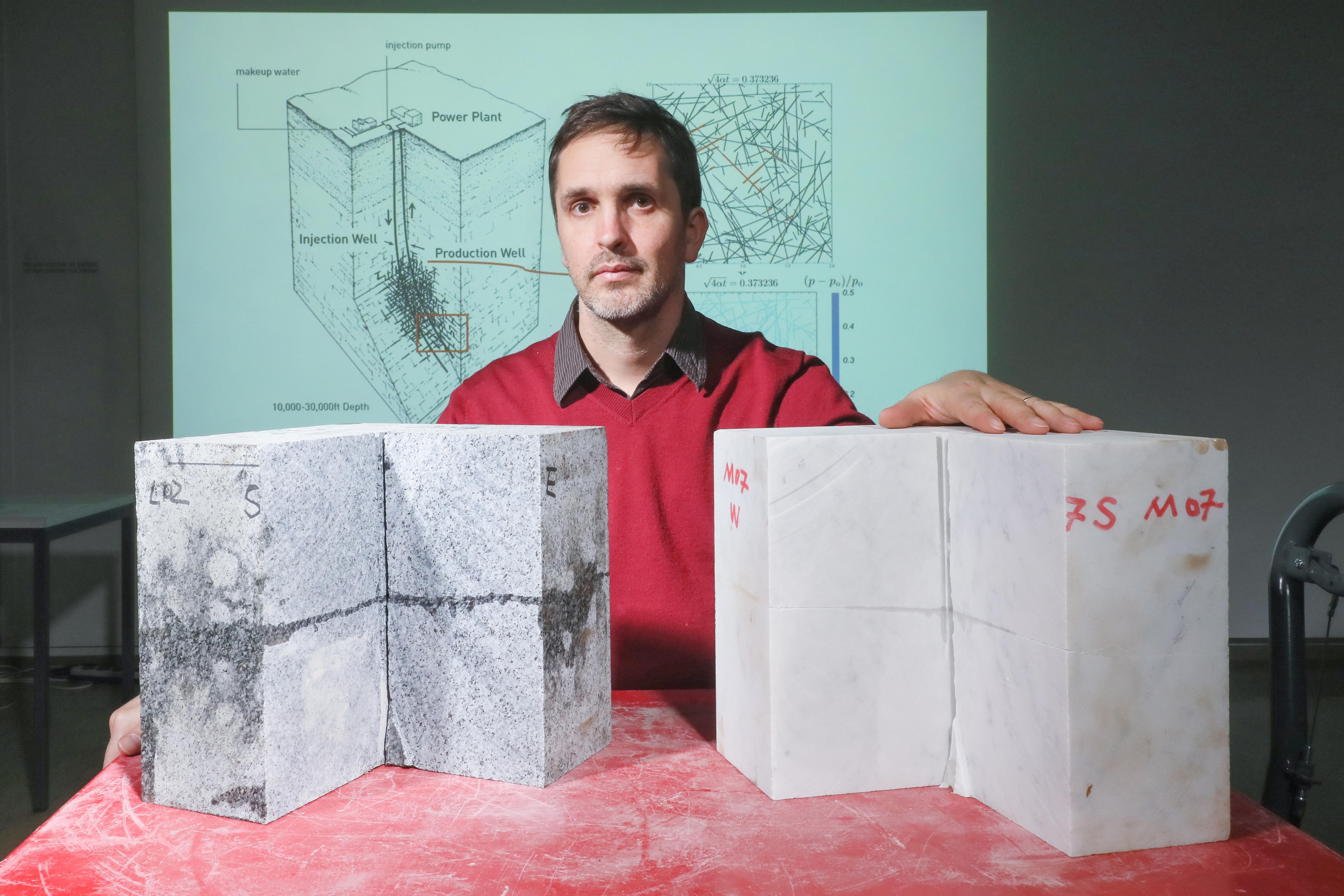 |
| Brice Lecampion is tenure track assistant professor at EPFL. © Alain Herzog/EPFL |
Researchers at the Swiss Federal Institute of Technology Lausanne EPFL (École polytechnique fédérale de Lausanne) have developed a new model to calculate hydraulic fracture propagation.
Acclaimed for its accuracy by experts, the model better predicts fracture geometry and the energy cost of hydraulic fracturing – a widely used technique in areas such as CO2 storage, hydrocarbon extraction, dams and volcano hazard monitoring.
Engineers need to be able to calculate how these fractures propagate so they can determine precisely how much liquid to inject, and estimate the geometry – or length – of the resulting fractures. Improved estimation of the propagation is also vital to ensure the safety of the process, and helps engineers estimate its energy cost.
Engineers need to be able to calculate how these fractures propagate so they can determine precisely how much liquid to inject, and estimate the geometry – or length – of the resulting fractures. Improved estimation of the propagation is also vital to ensure the safety of the process, and helps engineers estimate its energy cost.